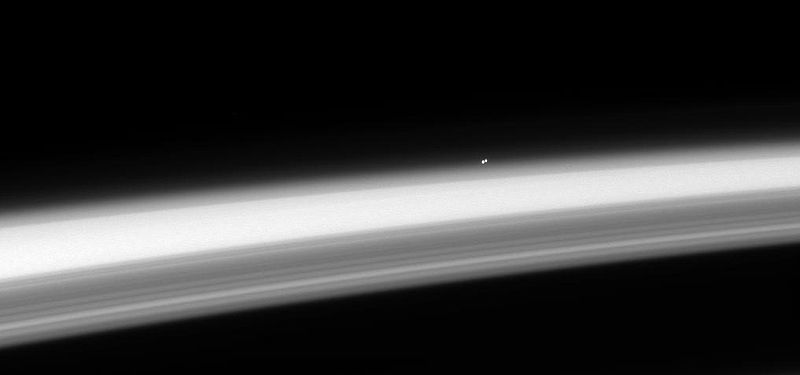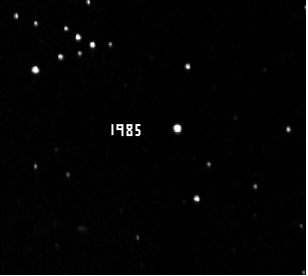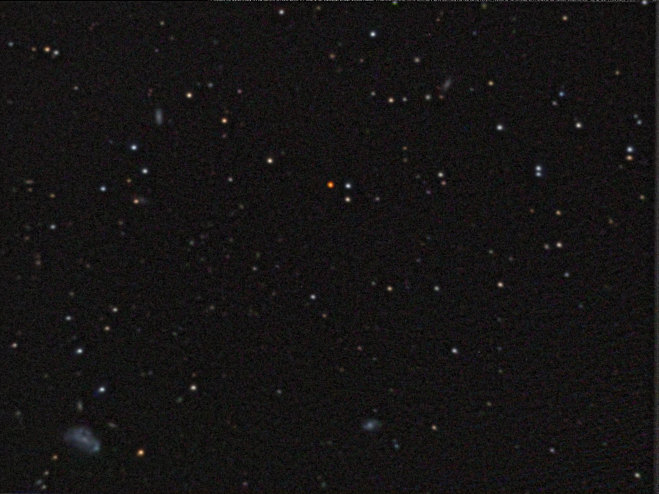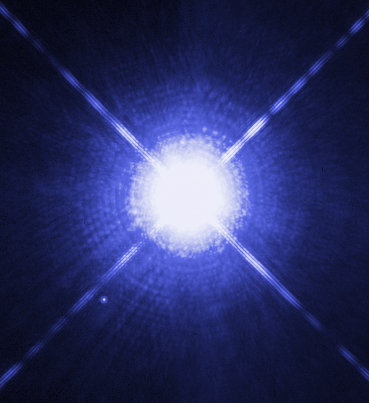Added 1 new A* page:Looks like my new drawing tablet won't get here until tomorrow :|, so although I finished the script for episode 13, I can't start in on the storyboards yet. According to the script it's going to be a pretty long episode--165 pages or so--so I'd probably need at least three full days to draw that many storyboards, but since I'll now only have two at best before I run out of episode 12 pages (and I still need to finish up the last one, actually :P), this means that I'll probably still have to be drawing storyboards while also starting in on actual episode 13 pages on Thursday, which means (this is the only part that really matters for you the reader) that I probably won't get up to my usual two-pages-per-day speed until some time the following week. Botheration!
So not having a way to draw today, I'm just puttering around doing any non-drawing thing I can think of, like shipping off an art print, proof-reading the script like four more times, uh and I'll probably go dink around with my ads or something later. But I also came up with a pretty fat blog entry topic over the weekend, and so I might as well burn through that today while I can't draw. Here goes then!
Wikipedia's list of nearest stars is pretty neat, and reading through its entries really starts to give an idea of the immense variety of stuff there is out in space, even just around our own quiet little star system! For instance, you may have heard lots of times that the nearest star to us (at just over four light years--could have sworn the figure I was given as a kid was more like 3 ly, but eh I have a bad memory so who knows) is Alpha Centauri--except that Alpha Centauri isn't a star, it's two--and actually maybe even three, since it turns out there's a red dwarf star, Proxima Centauri, that may be gravitationally attached to the two other stars--which are much closer together--making it a triple star system, or "trinary." Just think, the closest star to us, actually a triple! Or at least a double. Makes our single star seem a bit boring by comparison, perhaps.
Of course, we have planets, and they...may not. There's been a lot of controversy of people claiming to have spotted evidence for planets in Alpha Centauri, but for the most part they seem to have been rebuffed for the time being.
But there's more stuff that makes Alpha Centauri pretty interesting. The small Proxima Centauri, just a bit over a tenth of the Sun's mass and diameter, and too faint to be seen with the naked eye, even as close as it is (it's about a tenth of a light year closer than its two larger siblings), sometimes increases in magnitude by up to 8%: it's a very active "flare star," and the flaring activity is thought to be the work of a powerful magnetic field.
Alpha Centauri is headed in our direction, too! Proxima, for instance, is moving toward us at about 21.7 km/s (compare with the Voyager spacecraft's 17 km/s); 26,700 years from now, it is expected to reach its nearest distance to us, 3.11 light years. Alpha Centauri as a whole is projected to vanish from naked-eye view about 100,000 years from now as it moves past us in its orbit around the galaxy.
Here it is--Alpha Centauri A and B, anyway--above the rim of Saturn, as seen by the Cassini spacecraft in 2008:

image by NASA (source)
The second closest star system to Earth, at just under six light years away, is Barnard's Star, another red dwarf, just slightly bigger than the teeny Proxima Centauri. Barnard's is the fastest star moving across our night sky

image by Steve Quirk (source)
and it is moving toward us at about 140 km/s--it will reach its closest point of 3.8 light years in the year 11700, but still won't be visible without a telescope. As with Alpha Centauri, lots of people claimed to have discovered evidence of planets around Barnard's Star, and there was even a starship project intended to go there--Project Daedalus in the '70's--with the hope of reaching it and its supposed planets within 50 years, if the ship could hit a theoretical speed of 12% the speed of light through fusion pulse propulsion utilizing intertial confinement fusion of 50,000 tons of deuterium/helium-3 pellets to propel the 4,000 ton craft on a one-way trip; it wouldn't be able to decelerate and stop at Barnard's Star (you'd need ten times the fuel for that, or something, I think... Well I can't remember, maybe I'm just making that up :P), so 18 sub-probes would have launched between 1.8 and 7.2 years before reaching the star, spreading out with nuclear ion drives to observe the star they'd be speeding by. Oh, and getting enough helium-3 to get there would require 20 years of mining the atmosphere of Jupiter via balloon-supported robotic factories, supposedly.
Fun! Not easy to catch a star, much less a fast one, I suppose. Fast as it is relative to us, Barnard's Star is an ancient one; the furthest estimates (the smallest being more like 7) of a 12 billion year age would make it one of the oldest stars in the galaxy! For a star, being old means, among other things, rotating slower: it takes Barnard's Star 130 days to rotate around its axis, vs just 25 for the young punk Sun. Being that old, it also isn't supposed to have much of a magnetic field anymore, but it threw scientists for a loop in 1998, when it suddenly flared to twice its normal temperature. So finding out how that happened would be one big aim of any exploration of it.
Skipping down the list past a couple more red dwarfs, Wolf 359 and Lalande 21185 (although this nice photo of Wolf 359 gives an idea of what a nearby red dwarf might look like through a telescope)

image by Klaus Hohmann (source)
(Wolf 359 is the red dot in the upper middle of the picture) brings us to another binary: Sirius. I've written about it before on the A* forum, so I'll just quote myself here:
There's a white dwarf pretty much right next to us, just 8.6 light years away: Sirius B, and it in fact is one of those dwarfs that's about the mass of the Sun (0.98 solar masses is close!) and the size of the Earth. It's in a binary with Sirius A, which is about two solar masses, and the brightest star in our sky--after the Sun. Here you can see little B and big A; the B dwarf is the little white dot to the lower left of the big A glare:

image from NASA (source)
White dwarfs and their "degenerate matter" are pretty awesome, but I'll limit myself to just dropping those links on you for now. :)
Skipping down the list again past four more red dwarf flare stars (the binary Luyten 726-8, then Ross 154 and Ross 248 (Voyager 2 will come within 1.76 light years of Ross 248 in 40,176 years!)), I'll just dwell last on Epsilon Eridani (which will come within a light year of Luyten 726-8 around AD 33500, possibly knocking some comets off or something!), ninth in the distance list at ten and a half light years from Earth.
Epsilon Eridani has extensive disks of debris around it, and has the firmest candidates for an extrasolar planet or two close to Earth, although they're still debated and theoretical, respectively. Epsilon Eridani is all the more exciting to those who like to try to discover planets because it's a "sunlike" star, which is to say that it's not radically different than the Sun in terms of mass, size, and brightness: 82%, 74%, and 34%, respectively. But its magnetic field is stronger than the Sun's, and that's one indicator that has scientists thinking its a relatively young star: maybe between 0.5 and 1 billion years old, for instance (the Sun is about 4.5 billion years old).
While the presence of planets around Epsilon Eridani is hotly debated, the presence of an outer dust disk around it can be pretty firmly proven based on strong infrared readings from the system, and what we can project from that is pretty interesting in its own right. The dust disk seems to have about one-sixth of the mass of the Moon in it, and maybe 5 to 9 Earth masses worth of comets; it is also thought that it would have taken collisions between about eleven Earth masses-worth of "parent bodies" to generate all that stuff. Furthermore, a 2008 study of data from the Spitzer Space Telescope (which sees in the infrared) determined that there are two asteroid belts inside the cometary disk, and that two-belts-plus-disk structure suggests the presence of "more than two planets" to be herding that material into its current configuration.
All that within just ten and a half light years from Earth! (And this isn't counting any Earth or smaller planets that might be there since we can't really spot those with current technology.) And the galaxy is 10,000 times wider than that! And there are maybe more than 170 billion galaxies within just the part of the universe we can see!
... That's gonna be a lot of blog entries. :o
|
